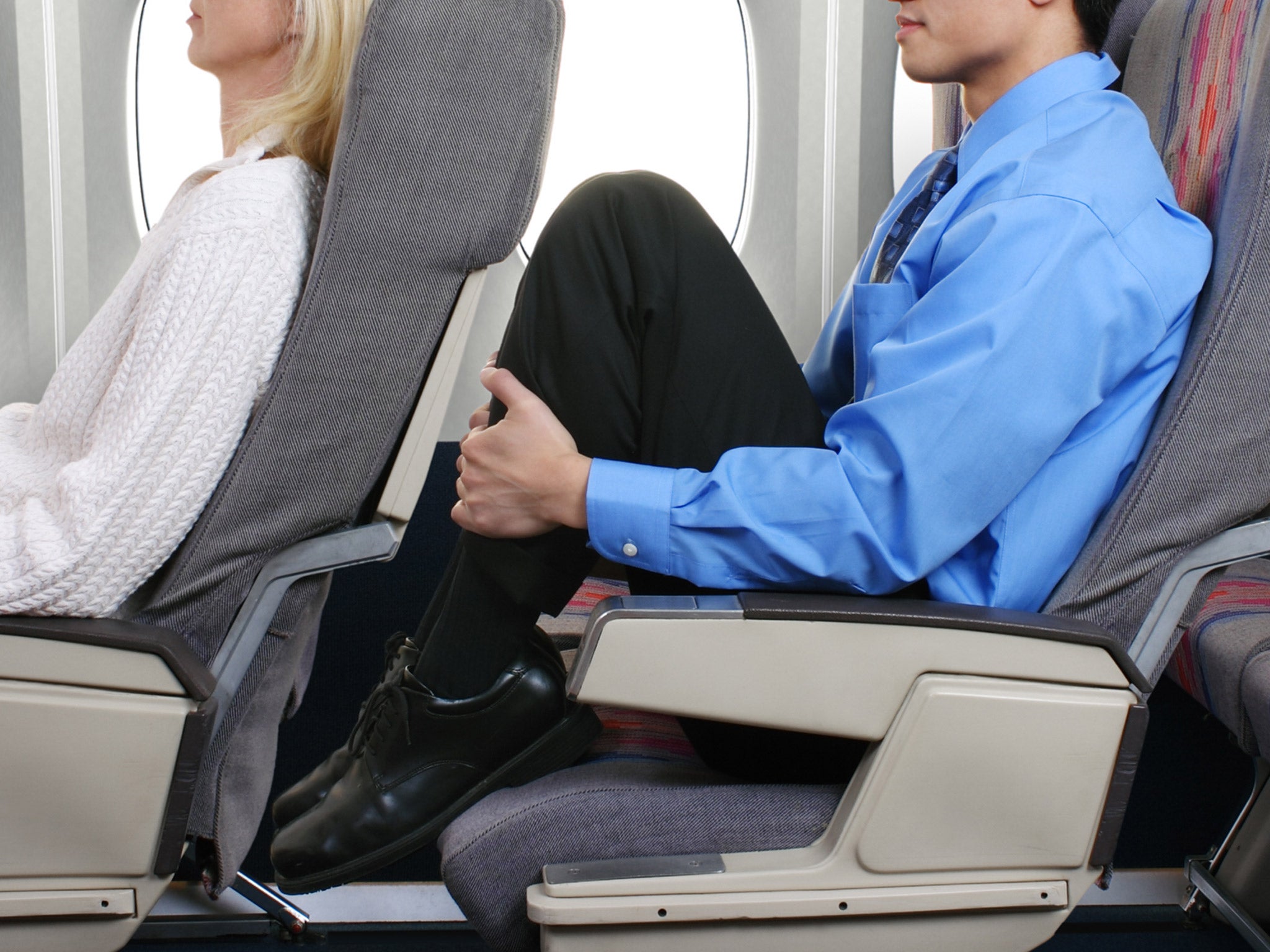Small seats and limited legroom on flights should be banned, says US congressman Steve Cohen
Democrat who represents Tennesse wants the federal government to stipulate minimum legroom and seat width

Your support helps us to tell the story
From reproductive rights to climate change to Big Tech, The Independent is on the ground when the story is developing. Whether it's investigating the financials of Elon Musk's pro-Trump PAC or producing our latest documentary, 'The A Word', which shines a light on the American women fighting for reproductive rights, we know how important it is to parse out the facts from the messaging.
At such a critical moment in US history, we need reporters on the ground. Your donation allows us to keep sending journalists to speak to both sides of the story.
The Independent is trusted by Americans across the entire political spectrum. And unlike many other quality news outlets, we choose not to lock Americans out of our reporting and analysis with paywalls. We believe quality journalism should be available to everyone, paid for by those who can afford it.
Your support makes all the difference.A US congressman has launched a crusade for bans on small seats and limited legroom on flights.
Steve Cohen, a Democrat who represents Tennessee in Washington, wants the federal government to stipulate minimum legroom and seat width. He has introduced the “Safe Egress in Air Travel Act of 2016” – or SEAT Act. It calls on the Secretary of Transportation “to establish minimum dimensions for passenger seats on aircraft,” including width and seat pitch - the distance from the front of one seat to the front of the next.
Representative Cohen said: “Shrinking seats raise safety and health concerns, and it’s time for the FAA to take action.” His primary concern is about the ability of passengers to evacuate the aircraft in an emergency, but he also warns about the growing danger of deep-vein thrombosis (DVT) as well as general discomfort.
“Consumers are tired of being squeezed both physically and fiscally by airlines.”
The amount of personal space for economy-class passengers in the US has steadily declined over the decades since deregulation in the 1970s. As more rows have been crammed in, seat pitch has fallen by four inches to 31”, while the average width of seats has dwindled from 18 inches to 17 or less.
Yet airlines already face constraints on the number of passengers they can pack in. The first is the ability to evacuate a full aircraft within 90 seconds, even with half the emergency exits disabled; the aim is to get everyone out before fire takes hold.
Seat pitch and width across the Atlantic
Airlines tend to wax lyrical about their business-class cabins: the wide open spaces, the flatness of their beds, the squishyness of the pillows, etc. But they remain mostly tight-lipped about the back end of the plane, where the majority of passengers sit. With good reason, too, given the remarkably constant lack of space in the cheap seats.
An (i) Independent (/i) survey of the most commonly deployed aircraft on a dozen transatlantic airlines found three-quarters of them offer a seat pitch of 31 inches: Aer Lingus, Air Canada, American Airlines, British Airways, Delta, Lufthansa, Norwegian, United and Virgin Atlantic. Three go one inch better: Air France, Air New Zealand and Icelandair.
In terms of width, there is not even an inch in it. The minimum is 17 inches (on Aer Lingus, Air France, Air New Zealand, American and United), with fractionally more on the others; elbowing its way to the top is Delta (17.9).
The other limitation is what passengers will tolerate in terms of discomfort, particularly on long flights. There is some evidence from budget airlines in Europe that travellers will put up with a lot in return for cheap fares - with no-frills aircraft deployed on flights lasting five hours or more.
No airline, though, has operated the Airbus A380 “superjumbo” at anything like its certificated capacity of 853 passengers. To do so would involve a one-class-only configuration, with 11 seats abreast - in a 3-5-3 arrangement, felt to be deeply unpopular with passengers.
Malcolm Ginsberg, editor of Business Travel News, said: “Mr Cohen may live in the land of free enterprise but he is out of touch with what that means. Yes, you can have bigger seats and accommodate less passengers, but that means price rises. Much better to have slimmer and healthier travellers and perhaps fare reductions.
“This bill has not a chance of success.”
Haydn Wrath, director of the long-haul specialist Travel Nation, said: “Given obesity levels in the US, I worry that if the government there legislated about seat width and pitch that we might all find ourselves having to pay for business class on transatlantic flights.”
The Independent has found that economy class on most transatlantic flights has a seat pitch of just 31 inches, with seats 17 inches wide or fractionally more. Passengers on United Airlines 757 flights from various UK airports must be even trimmer, with a seat width of just 16 inches.
Airline passengers’ dissatisfaction with personal space is not simply down to airlines packing in more seats; it is also a result of higher passenger loads. When budget airlines began flying in Europe 20 years ago, an average of seven out of 10 seats were filled; today, both easyJet and Ryanair average over nine out of 10. As a result, there is a much slimmer chance of an empty seat adjacent and a greater likelihood of jostling elbows.
Join our commenting forum
Join thought-provoking conversations, follow other Independent readers and see their replies
Comments